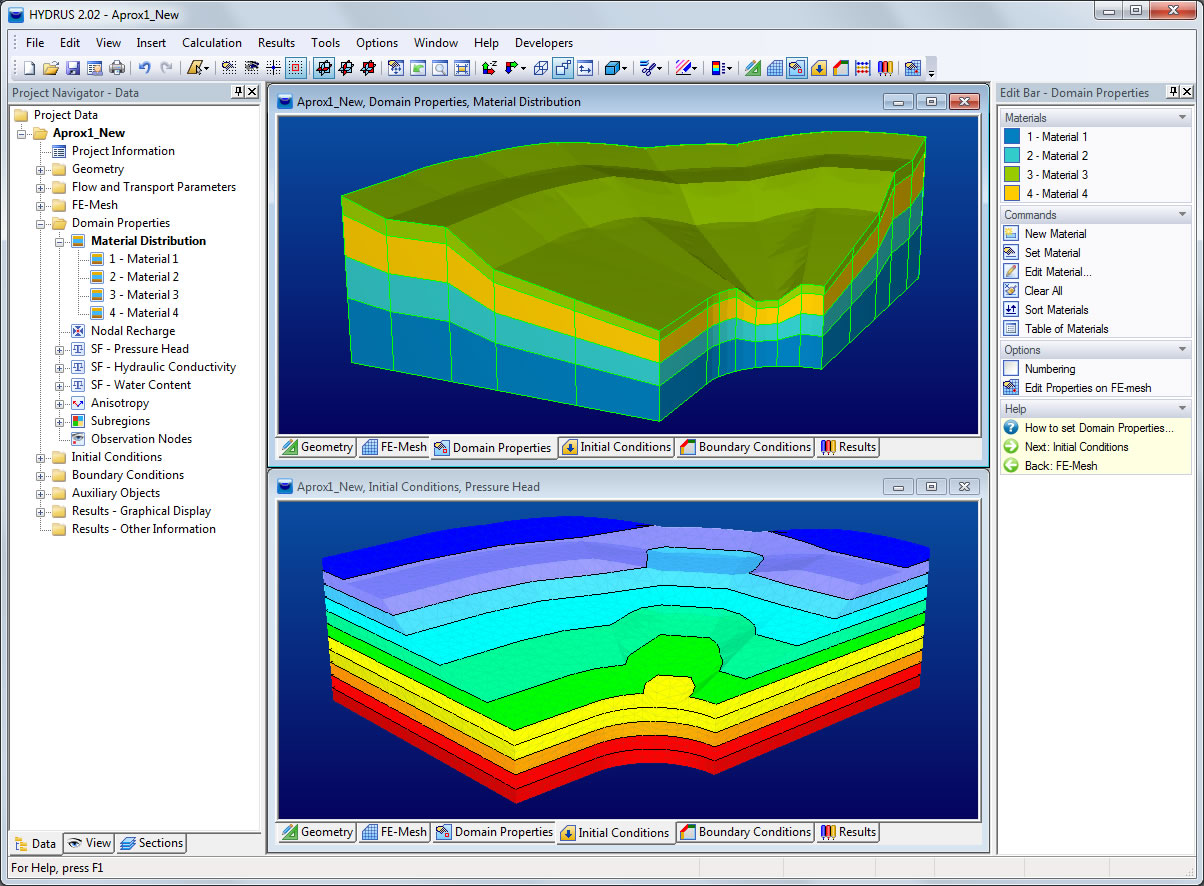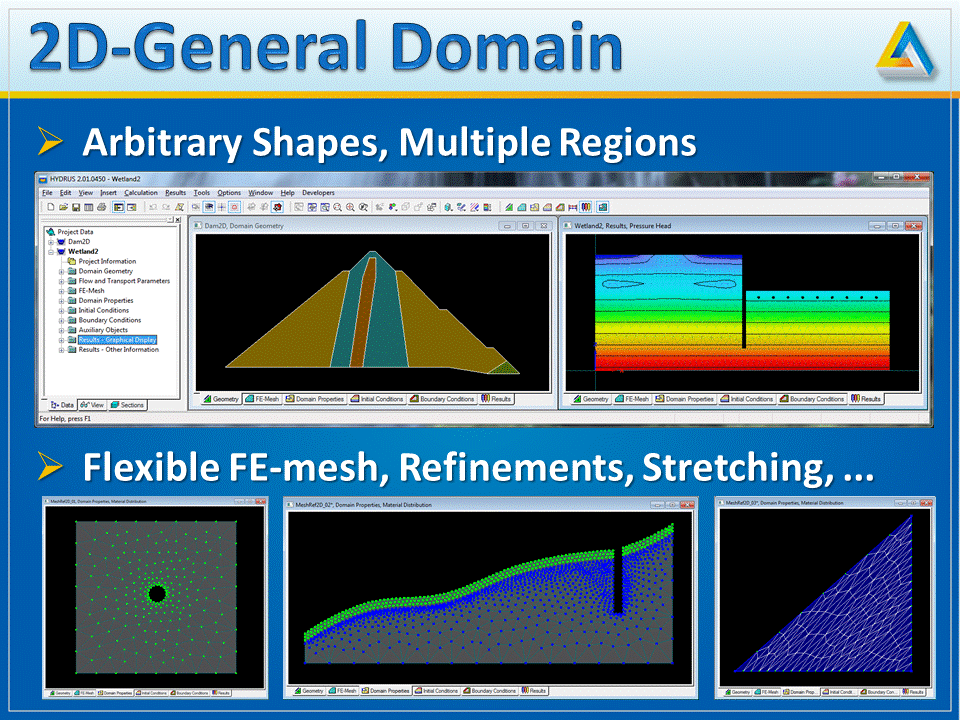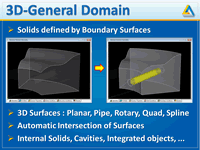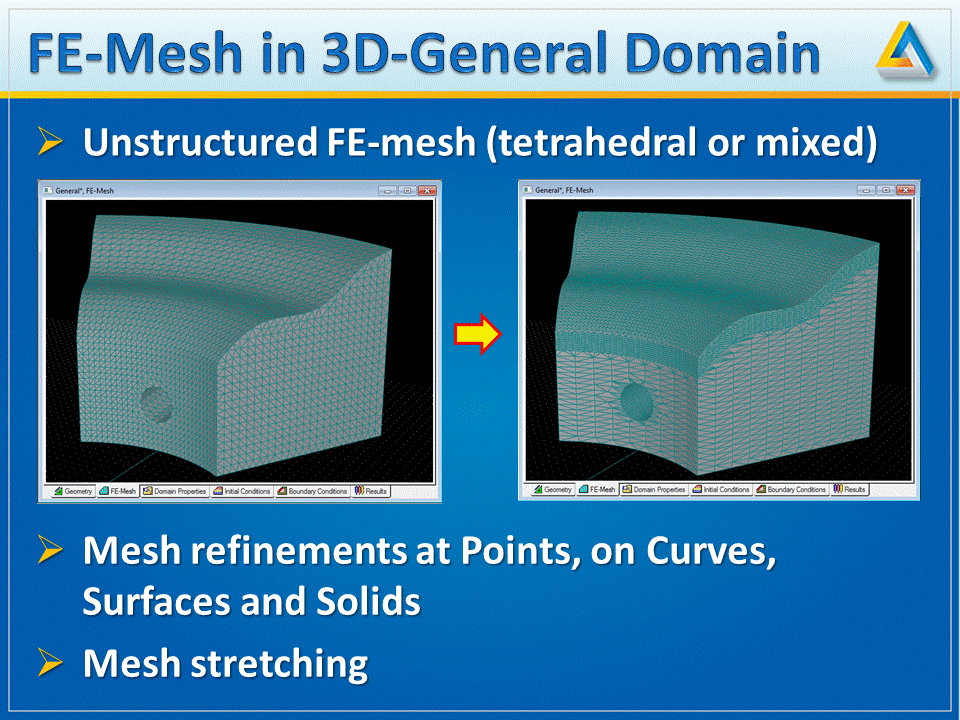| Module Name |
Dimension |
Flow, Transport, and Reaction Simulations |
| HP1, HP2 |
1D, 2D |
The HP1 and HP2 modules are the result of coupling Hydrus (its one- and two-dimensional parts) with the PHREEQC geochemical code [Parkhurst and Appelo, 1999], and corresponds to a similar one-dimensional module HP1 [Jacques and Šimůnek, 2005, 2010; Jacques et al., 2006, 2008]. HP2 has, apart from the dimensionality (2D), the same capabilities as HP1. HP2 contains modules simulating (1) transient water flow, (2) the transport of multiple components, (3) mixed equilibrium/kinetic biogeochemical reactions, and (4) heat transport in two-dimensional variably-saturated porous media (soils). Detailed description of the HP2 Module is given in the HP2 user manual [Šimůnek et al., 2012]. |
| UnsatChem |
1D, 2D, 3D |
The Major Ion Chemistry Module [UNSATCHEM; Šimůnek and Suarez, 1994] can be used instead of the standard solute transport module. Detailed description of the UNSATCHEM Module is given in the UNSATCHEM user manuals [Šimůnek et al., 2012, 2022]. More detailed description of concepts used in the UNSATCHEM module is provided in the HYDRUS-1D technical manual Šimůnek et al., 2022], which provides all relevant information about the one-dimensional version of this module. |
| Wetland |
2D |
The Wetland Module (for two-dimensional problems only) was developed to model biochemical transformation and degradation processes in subsurface flow constructed wetlands. In the wetland module two biokinetic model formulations can be chosen: (1) the biokinetic model as described in CW2D [Langergraber and Šimůnek, 2005, 2006, 2011] and (2) the CWM1 (Constructed Wetland Model #1) biokinetic model Langergraber et al., 2009]. In CW2D aerobic and anoxic transformation and degradation processes for organic matter, nitrogen and phosphorus are described, whereas in CWM1 aerobic, anoxic and anaerobic processes for organic matter, nitrogen and sulphur. |
| C-Ride |
1D, 2D |
The C-Ride module simulates one- and two-dimensional variably-saturated water flow, colloid transport, and colloid-facilitated solute transport in porous media. The module accounts for transient variably-saturated water flow, and for both colloid and solute movement due to advection, diffusion, and dispersion, as well as for solute movement facilitated by colloid transport. Detailed description of the C-Ride Module is given in the C-Ride user manuals [Šimůnek et al., 2012, 2022]. |
| DualPerm |
1D, 2D |
The DualPerm module for simulating two-dimensional variably-saturated water movement and solute transport in dual-permeability porous media, i.e., preferential and nonequilibrium water flow and solute transport [Gerke and van Genuchten, 1993; Šimůnek et al., 2003; Šimůnek and van Genuchten, 2008]. |
| Furrow |
2D |
The Furrow module is a hybrid Finite Volume – Finite Element (FV-FE) model that describes the coupled surface-subsurface flow and transport processes occurring during furrow irrigation and fertigation Brunetti et al., 2018]. The numerical approach combines a one-dimensional description of water flow and solute transport in an open channel with a two-dimensional description of water flow and solute transport in a subsurface soil domain. |
| PFAS |
1D, 2D, 3D |
The PFAS module includes options to consider sorption to the air-water interface and the concentration effects on surface tension and viscosity Silva et al., 2020]. |
| Particle Tracking |
1D |
The Particle Tracking algorithm from Šimůnek [1991] was implemented into HYDRUS Zhou et al., 2021]. The results of this module can be used to calculate soil water travel times and water age for different locations in the soil profile. |
| COSMIC |
1D |
The COSMIC module developed by Brunetti et al. [2019] calculates above ground neutron fluxes used the physically-based COsmic-ray Soil Moisture Interaction Code (COSMIC) of Shuttleworth et al. [2013]. |
| DPU |
1D, 2D |
The Dynamic Plant Uptake (DPU) module developed by Brunetti et al. 2019, 2021, 2022] simulates the translocation and transformation of neutral compounds in the soil-plant domain. |
| Fumigant |
1D, 2D, 3D |
The Fumigant module includes options required to simulate the fate and transport of fumigants in soils (e.g., removal of a tarp, temperature-dependent tarp properties, an additional injection of fumigant) Spurlock et al., 2013]. |








